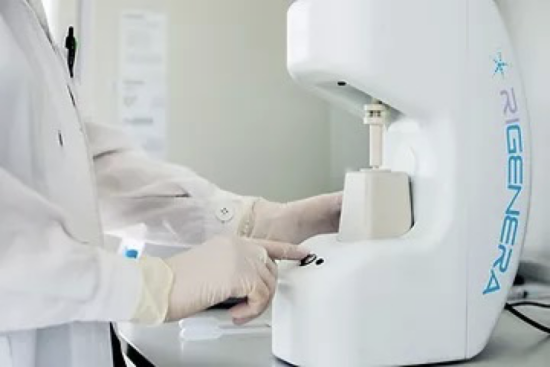
© All rights reserved BHR Clinic - Developed by Eugene Informatique
FUE is a technique that has been truly perfected by only a handful of doctors worldwide. The extraction is technically more difficult and special attention must be given to the surrounding hair in terms of donor management protocols to ensure that there is no visible drop in density throughout the donor area. The procedure individually extracts follicular units from the back and sides of the head, thereby expanding the surface area that can be harvested and safely providing more grafts.
The process is very specific and deliberate (between 2500 – 3000 follicular units can be extracted and placed per day), meaning larger procedures are generally completed over two days.
FUE is considered much less invasive than other techniques and therefore also ideal for smaller procedures, such as for patient`s with minimal thinning or those who have had a previous poor strip surgery in which donor area laxity or density has been compromised.
With FUE, genetic groups of 1 to 4 hairs known as follicular units are individually extracted demanding a great deal of skill and precision with a profound understanding of skin, hair direction and angles. A surgical punch then surrounds the follicular unit, separating it from surrounding tissue. The size of the punch will be selected based on the hair characteristics of the patient. For example, a patient with curly hair would require a larger punch size than a patient with straight fine hair. Also, single-hair grafts will require a smaller punch than a follicular unit containing four hairs.
Due to the small size of the punch, the site is almost invisible to the naked eye making signs of a transplant almost indistinguishable even with short or closely shaved hair. The donor area is shaved, allowing the doctor to precisely evaluate the angle and direction of the follicular unit within the scalp.
The beauty with FUE is that it allows the doctor to “cherry-pick” the most suitable and appropriate hairs for specific areas of the restoration. This is essential for designing hairlines and temple points as well as for eyebrow or eyelash reconstruction.
With this in mind, having an entire donor safe zone to select grafts from enhances the quality and naturalness of results.
Although follicular units are removed from a larger surface area compared to FUT/Strip, this does not necessarily mean there are more follicular units available. To understand how many can be safely extracted, density is evaluated in three areas of the safe donor zone. Using this data, Dr. Bisanga can calculate how many grafts can be safely harvested.
OVER HARVESTING OF THE DONOR AREA
A sensible and precise donor management approach is essential. This ensures that an appropriate amount of follicular units can be extracted before density is visibly compromised. If this is not managed correctly it will reduce options for keeping hair short or restrict the donor area for any potential subsequent procedures. This is called “overharvesting”. Dr Bisanga works with roughly 25-30% extraction per cm2 depending on hair density and quality. This encourages optimal healing in the donor area post-surgery and allows further options of potential surgery in the future.
EXTRACTION PATTERN
The pattern of extraction is also vital. The term “cherry picking” is often used with FUE and refers to the removal of appropriate grafts. For example finer hair for hair line work. Considering the amount of hairs within each follicular unit varies, it is important to maintain an extraction pattern to avoid removing too many follicular units of a specific hair grouping from any particular area.
HAIR CHARACTERISTICS
Hair characteristics and follicular unit constitution play an important role in whether a patient is a good candidate for FUE and what type of result can be achieved. Limitations include insufficient donor hair density, low hair groupings and any level of miniaturisation that may be present in the patient´s donor area.
FOLLICULAR UNIT EXCISION
TRADITIONAL METHOD
BODY HAIR TRANSPLANT (BHFUE)
PLATELET-RICH PLASMA
© All rights reserved BHR Clinic - Developed by Eugene Informatique